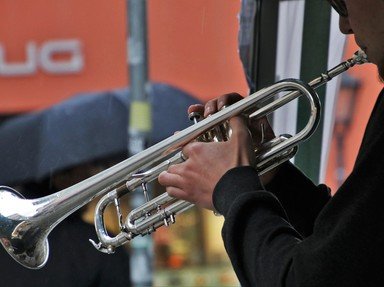
Tools of the Trade Trivia Quiz
Jazz Musicians & Their Instruments
Jazz, in its various forms, has been blessed with some of music's finest musicians and, whilst this quiz is not out to name the greatest amongst them, it chooses those that can be readily identified by the instrument that they have best used.
A matching quiz
by pollucci19.
Estimated time: 3 mins.
- Home
- »
- Quizzes
- »
- Music Trivia
- »
- Other Music
- »
- Jazz